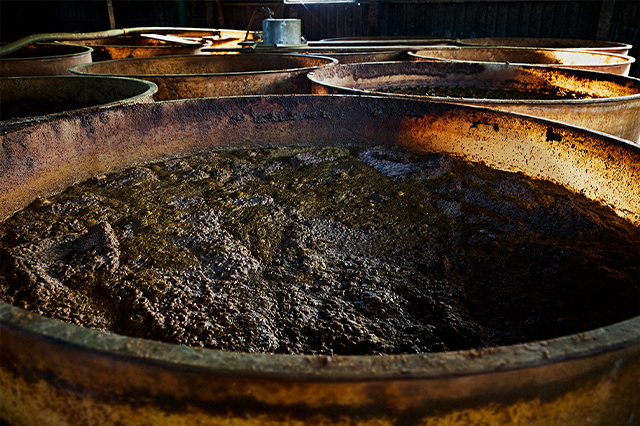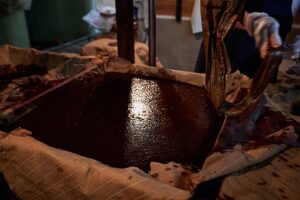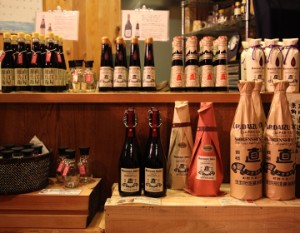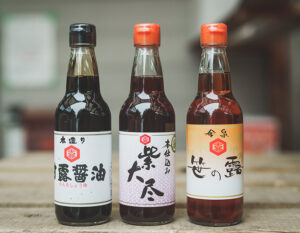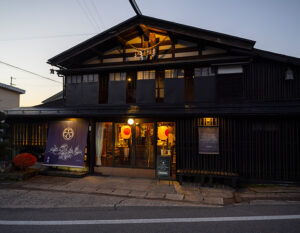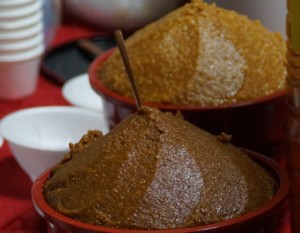Maruhide shoyu – Natural Brewing
Only soybeans, wheat, salt, and water. Maruhide shoyu, a long-established soy sauce brewery in Saga City, Saga Prefecture, established in 1901, insists on natural brewing and two-year aging, which is rare these days.
The soy sauce sold in general is fermented by artificially adding lactic acid bacteria or yeast, or by controlling the temperature of the mash to force fermentation. In this way, the soy sauce is ready in about three to five months, but we use only natural bacteria that live in the brewery, so it takes two years to ferment. It is an old-fashioned way of making soy sauce, but naturally brewed soy sauce made this way has a fruity aroma.
Mellow and refreshing Maruhide soy sauce
Put the soy sauce in a wine glass and enjoy its aroma. Indeed, the aroma of the soy sauce here is different from that of ordinary soy sauce; it is mellow and refreshing. The richness and umami that lies behind the aroma can also be felt. The aroma is better after three years of fermentation, but the umami flavor is lost. The ingredients are also carefully selected, and only whole soybeans are used. The wheat is locally grown in Saga.

Healthy Fermented Foods
It is true that sweet soy sauce is delicious, but when you want to enjoy the taste of the ingredients themselves, such as in protein-rich fish sashimi, naturally fermented soy sauce is the way to go. We also make sweet soy sauce for the local market, but we add amazake to it so that the flavor of the soy sauce itself is not compromised.
Increasingly, television programs and magazines are introducing the health benefits of consuming fermented foods. Fermenting food increases its shelf life, so it has been used as a preservative food since the days when there were no refrigerators. In addition, it also helps the intestines to digest food. In addition, the popularity of restaurants featuring fermented foods is increasing, especially among health-conscious people, as fermented foods help the intestines digest and boost the immune system.
Fermented foods familiar to us on a daily basis
When we think of fermented foods, we probably think of soy sauce, miso, natto, etc. Cheese, pickles, dried bonito flakes are also fermented foods. Cheese, pickles, dried bonito flakes are also fermented foods, as are sake, black tea, oolong tea, etc. In fact, Japanese people eat many fermented foods on a daily basis. In fact, Japanese people eat many fermented foods on a daily basis.
Marushu uses ten kinds of Japanese grains, including soybeans, barley, red rice, black rice, green rice, pigeon pea, millet, and Japanese millet, and each of these grains has its own koji mold attached to it, giving it a deep flavor.

Superb soy sauce that sticks to the old-fashioned way
The wood is cooked on the first floor of the five-story building, and the dried bonito is smoked one floor at a time, taking about a month to reach the desired level of dryness,” said Takeuchi.
A tour of the brewery, lined with large wooden barrels, revealed a rich aroma of fermenting malt. The bacteria that live in this well-worn warehouse and the craftsmanship of the artisans who carefully craft each ingredient and process make the finest soy sauce.




